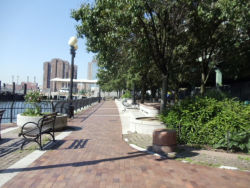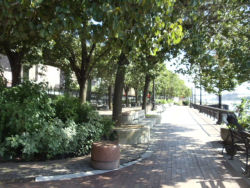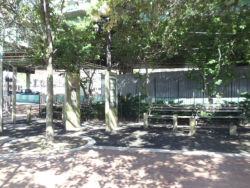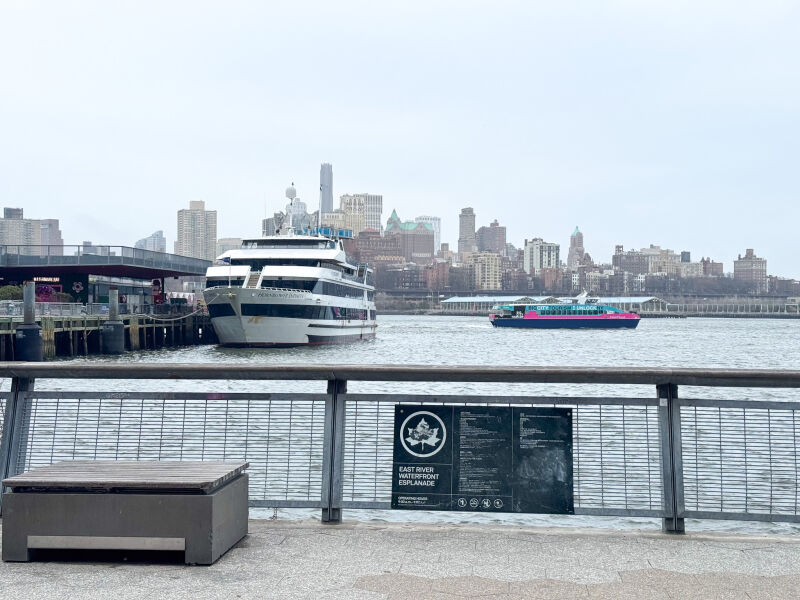East River Esplanade
The Daily Plant : Monday, February 11, 2002
A RING AROUND MANHATTAN
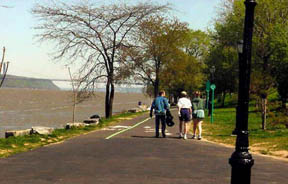
In his State of the City address on January 30, Mayor Bloomberg said, "We must renew our waterfront…we will complete a multi-use recreational path around the entire edge of Manhattan." According to Planner Ellen Macnow, Parks Planning has been hoping to create a greenway "ring around Manhattan," to provide public access to the waterfront for at least a decade. The City currently owns 18 of the 32 miles of Manhattan’s waterfront, and Parks maintains approximately 150 miles of existing greenways citywide. Greenways are a part of the city’s history and culture, the oldest, the Ocean Parkway in Brooklyn, was completed in 1894.
Today, visitors can follow the Hudson River Greenway on Manhattan’s west side for 11 miles, from Battery Park, at the southern tip of Manhattan, to the Little Red Lighthouse, underneath the George Washington Bridge. This route passes through Hudson River Park, Riverside Park South, Riverside Park, and Fort Washington Park. In the past two years, Parks completed four vital links in the greenway –Riverside Park South, Cherry Walk, Riverbank Link, Fort Washington Link -- and is designing additional waterfront segments that will replace existing in-land detours. This Hudson River Greenway will serve as New York City’s portion of the Hudson River Valley Greenway, a state initiative promoted by Governor Pataki.
Chief of Planning Joshua Laird reports that Parks, working with the Conservancy for Historic Battery Park, is currently designing a greenway segment through Battery Park. When complete, this critical trail will serve as the keystone of the Manhattan waterfront, linking the Hudson River Greenway with the East River Esplanade currently being developed by Economic Development Corporation (EDC). On the east side of Manhattan, EDC’s esplanade project will extend from the new Staten Island Ferry Terminal to East River Park and their Stuyvesant Cove Project will extend the greenway from 18th Street to 23rd Street. Significant portions of the waterfront are already linked to the East River Esplanade in the south, and Parks is in the process of implementing its Master Plan for Harlem River Park to the north.
City Planning’s 1993 Greenway Master Plan for New York City noted that greenways are "…at once the parks for the 21st century and a part of the transportation infrastructure, providing for pleasant, efficient, healthful and environmentally sound travel by foot, bicycle or skates." With the Mayor’s support, Parks should be able to complete the long awaited "ring" in the not-too-distant future.
By Jennifer Keeney
THIRTEENN YEARS AGO IN THE PLANT
(Monday, February 20, 1989)
NEW PARKS PUBLICATIONS BLOOM
The famous American playwright George Hoffman once said that plays aren’t written—they’re rewritten.
The same goes for Parks publications, which also need to be researched, designed and edited. Two new literary works have recently been published. The second edition of "Trees for City Streets," an illustrated foldout brochure describing a variety of tree species recommended by Parks for planning along city streets, is now available.
The brochure also provides general information about the city’s urban forest and tells New Yorkers how they can have street trees planted on their block. New York City’s urban forest consists of approximately 2.7 million trees, 70,0000 of which line city streets. Every year, Parks plants close to 10,000 street trees throughout the city.
QUOTATION FOR THE DAY
"To invent, you need a good imagination and a pile of junk."
Thomas Edison
(February 11, 1847 – 1931)


